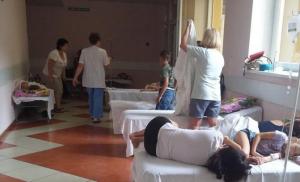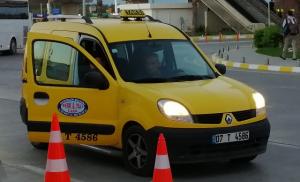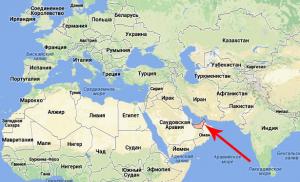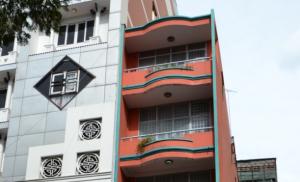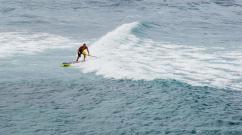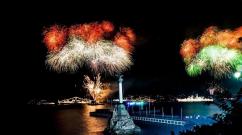Cape Lucullus in Crimea. Cape Lucullus - the southern entrance of the Kalamitic Gulf Rest on Cape Lucullus
Cape Lucullus is located in the Nakhimovsky district of Sevastopol, has a reddish color and is very steep. It is located in the northern part of Sevastopol and is the southern entrance to the Kelamitsky Gulf.
Previously, this cape was called Ulu-Kol (Ulu-Kul), which is translated from Turkic as “big slope”, “big slope”. Most likely, this cape was named after the famous Roman commander and politician Lucullus, who lived around the first century BC. It was he who brought the first great military successes of the Romans in the war against the Pontic Kingdom. The death of Mithridates Eupator VI allowed the Romans to expand their possessions in Asia Minor.
Just a few years ago, few people knew about the cape. A missile division was based here, and next to it was a military town. But recently this area has begun to develop, and now you can find expensive villas and mansions here. Here already long time people live. We also recommend reading about
features of life in different countries on habeo.ru. Here you can find a lot of interesting things about different resorts world and over time, having such a wealth of knowledge, it is possible to go there on vacation.
Cape Lucullus received the status of a hydrological natural monument of local importance - “Coastal aquatic complex at Cape Lucullus”, there is a hydrographic point here Black Sea Fleet Russia.
The lighthouse was first installed on the cape back in 1885. Then this lighthouse was made of wood, but it helped ships navigate when approaching Sevastopol from the north. IN Soviet times a metal beacon was installed here, the height of which reached 41 meters. Thanks to this height, the ships could see the fire from a distance of 15 nautical miles.
The sea water at Cape Lucullus is very clean and rich in marine inhabitants, which attracts fishermen, diving enthusiasts and just ordinary tourists. To the south of the cape there is Andreevka beach.
Here, on Cape Lucullus, researchers found traces of the Late Scythian Ust-Alma settlement and necropolis, which date back to the first century AD. Excavations are also still ongoing.
GPS coordinates: N 44 50.396, E 33 33.207


Toponymic researchers are inclined to believe that the name of the cape comes from the Crimean Tatar name of the Ulu-Kol ravine (“ulu” - “big”; “qol” - “arm”, “sleeve”, “beam”), near which the cape is located. On the first maps of Crimea the cape had the name Ulu-Kol (Ulu-Kul), but later this name was transformed into a more simple form- Lucullus.
Geography
The cape is located at the mouth of the Ulu-Kol gully near the confluence of the Alma River.
The cape is a high, steep reddish shore, clearly visible from the sea. The mild, moderately humid coastal climate and the dry climate of the Crimean steppes are organically combined here. The relief is mainly composed of clayey rocks, but near the water itself there are beaches of fine sand. The cape is 15 meters high.
The territory of the cape and the water area around it is considered a unique object natural fund with aquatic and terrestrial ecosystems located in the zone of interaction between sea and land and is a protected area. Here is a hydrological natural monument of local importance - “Coastal aquatic complex at Cape Lucullus” total area 125.6 hectares.
Near Cape Lucullus there is a large Scythian settlement, now called the Ust-Alminskoe settlement, which arose at the turn of the 3rd-2nd centuries BC. The true name of the settlement is unknown; there are different versions - Palakiy, Napit, or Habei. By now, about half of the site's area has been washed away and collapsed by the sea.
Flora and fauna
Notes
- Given geographical feature located on the territory of the Crimean Peninsula, most of which is the subject of territorial disputes between Russia, which controls the disputed territory, and Ukraine, within whose internationally recognized borders the disputed territory lies. According to the federal structure of Russia, on disputed territory Crimea is home to the constituent entities of the Russian Federation - the Republic of Crimea and the federal city of Sevastopol. According to the administrative division of Ukraine, the regions of Ukraine are located on the disputed territory of Crimea -
Cape Lucullus, protruding far into the sea, is visible from afar as red clay cliffs above the very edge of the waves, which reclaim inch by inch of the loose 15-meter wall from the land. Ulu-Kul - from Turkic - “big slope”, a name that later turned into the conveniently pronounced Lucullus, consonant with the name of a Roman military leader who hardly has anything to do with the Crimea.
Lucullus – southern part gateway to the Kalamitsky Gulf, washing the western coast of Crimea. The steppe, as flat as a saucer, without a single bush or tree, spread out along the very edge of the land, dotted with deep cracks. A 6-kilometer strip with a width of 300 m has been declared a protected area - there are unique natural inhalations here: salty air from the sea mixes over the cape with the steppe wind, saturated with the smells of medicinal herbs. But walking around the reserve is unsafe, especially coming close to the cliff - landslides and landslides often occur, carrying the clay mass down onto the narrow strip of sand bordering the cape, so that the waves gradually dissolve this mass of soil in water as clear as a tear.
Curious tourists explore Cape Lucullus during sea excursions, but from land it is not recommended to move around the protected area without an accompanying person.
Holidays near Cape Lucullus
Safe recreation begins outside the reserve, to the south in the direction of Andreevka and to the east near the village of Uglovoye.
Along the coast, 2 km from Cape Lucullus, the Andreevsky sand and pebble beach begins, 5 km long, separated from the deep cliff by lush shrub vegetation planted to strengthen the coast. The beach provides rental of umbrellas and sun loungers, and there are cafes and mini-restaurants, which always offer grapes from nearby vineyards and light Kachin wines produced by the winemakers of Kachinsky LLC, located nearby. Springs found right by the sea mineral water, cold and crystal clear.
There is a lot of fish in the local depths; local entrepreneurs organize fishing trips with access to the sea on a longboat.

The diving center is equipped with all the necessary equipment for underwater excursions with scuba diving.
The excursion bureau offers trips to Sevastopol, Bakhchisarai and other interesting places in Crimea.
For sandy beaches Corner also has all the necessary attributes of recreation and entertainment for tourists - scooter riding, water skiing, catamarans, banana boats, boat trips on boats and excursions around the peninsula.
Attractions in the surrounding area
3 km from Cape Lucullus, excavations were carried out at the Late Scythian Ust-Alminsky settlement, the only one in west coast Crimea Scythian settlements of the late 2nd century BC. Household items and tools found in the buildings indicate the nature of life and occupation of ancient people. Valuable finds from the Sarmatian burial “Golden Girl” have replenished the collections of Crimean museums.
In memory of the largest battle of the Crimean War of 1854 - Alminsky, which claimed the lives of 10 thousand soldiers of both armies - Russian and allies, a memorial was erected in a field near the village of Kacha, 9 km from Cape Lucullus.
The natural riches of the area adjacent to Cape Lucullus - a pine forest 5 km away, lavender fields at its edges with reddening glades of wild poppies - complement the delightful charm of Crimea.
Where to stay
Over the past few years, more than 2 dozen bases have grown in Uglovoy and Andreevka to accommodate holidaymakers. The most famous in Uglovoy are the Chernomorets recreation center, the Khani estate, the Lukull and Vireney boarding houses, the Atelika-Tavrida hotel, numerous households and cottages; in Andreevka – boarding houses “Fairytale”, “Shik”, and “Diva”, recreation center “Breeze”, guest courtyard “Rus”; in the park between Uglovoy and Andreevka there is the San Andre boarding house, the Sosnovy Bor campsite surrounded by pine trees and others. Price ranges are from 850 to 3,200 rubles, in cottages and the private sector a little less, a full meal costs 700 rubles for one person per day.

How to get to Cape Lucullus
Russia, Crimea, Bakhchisarai district, village. Andreevka and Uglovoe
Cape Lucullus is located 55 km from Simferopol, the main transport hub Crimea, and 25 km from district center Bakhchisarai. Buses from the Zapadnaya bus station near train station They depart frequently, and there is also a regular bus connection with Bakhchisarai. Travel by car along the Saki – Sevastopol highway.
Flights to Simferopol are possible from Moscow, St. Petersburg, Rostov-on-Don and Orenburg; air ticket prices range from 6 to 13 thousand rubles. By rail you need to go to Anapa or Krasnodar, then by bus through the Port Caucasus - Kerch ferry crossing. From Anapa to Sevastopol the fare is 430 rubles, from Krasnodar to Sevastopol – 830 rubles.
To the City Council. Located in the Nakhimovsky district of Sevastopol. It is the northernmost cape of the coast of Sevastopol and the southern entrance cape of the Kalamitsky Bay. There is a lighthouse on the cape.
Cape name
The name of the cape supposedly comes from two Turkic words “ulu” and “kul”, which translated means “big slope”, “big slope”. Also, a number of researchers connect the name of the cape with the name of the Roman commander Lucullus Pontus. On the first maps of Crimea, the cape had the name Ulu-Kol (Ulu-Kul), but later this name was transformed into a simpler form - Lucullus.
Geography
The cape is a high, steep reddish shore, clearly visible from the sea. The mild, moderately humid coastal climate and the dry climate of the Crimean steppes are organically combined here. The relief is mainly composed of clayey rocks, but near the water itself there are beaches of fine sand. The cape is 15 meters high.
Flora and fauna
The flora and fauna at Cape Lucullus is similar steppe Crimea. The following species are represented from the flora: Crimean wormwood, feather grass, spring Adonis, Taliev cornflower, etc.
Wikimedia Foundation. 2010.
- Cape Spruce
- Cape Mary Harmsworth
See what "Cape Lucullus" is in other dictionaries:
Cape Ay-Ya
Cape Aya- Cape Aya Cape Aya Cape on the southern coast of Crimea, on southeast from Balaklava, a coastal protrusion 13 kilometers long. The territory is subordinate to the Balaklava district of Sevastopol. Cape Aya limits South Bank Crimea from the west. The name of the cape comes from... ... Wikipedia
Cape Aya- a cape on the southern coast of Crimea, southeast of Balaklava, a coastal protrusion 13 kilometers long. The territory is subordinate to the Balaklava district of Sevastopol. Cape Aya borders the southern coast of Crimea from the west. The name of the cape comes from the Greek word... ... Wikipedia
"Cape Aya"
"Cape Aya" (reserve)- Cape Aya Coordinates 44.6, 33.5 ... Wikipedia
Cape Aya (reserve)- Cape Aya Coordinates 44.6, 33.5 ... Wikipedia
Cape Aya (reserve)- Cape Aya Coordinates 44.6, 33.5 ... Wikipedia
Lucullus (Cape)- Lukull (formerly Ulu Kol; Ukrainian Lukul; Crimean Catholicate. Ulu Qol, Ulu Kol) a cape in Ukraine, in Crimea, part of the territory subordinate to the Sevastopol City Council. Located in the Nakhimovsky district of Sevastopol. It is the northernmost cape... ... Wikipedia
LUKULLUS, cape- Located in the Nakhimovsky district, it is one of the northernmost capes of the coast of Sevastopol and the southern entrance cape of the Kalamitsky Bay. It is a high, steep, reddish cape visible from the sea. The Black Sea,... ... Toponymic Dictionary of Sevastopol
Cape of the Virgin (Balaclava)- V. Vereshchagin, “Cape Fiolent near Sevastopol” Fiolent (Ukrainian Fiolent, Crimean Tatarstan. Fiolent) cape in the southwestern part Crimean peninsula, in the Balaklava district of Sevastopol. Fiolent is composed of rocks of volcanic origin, remnants of the action ... Wikipedia
Lucullus (Ukrainian: Lukul) is a cape that is part of the territory subordinate to the Sevastopol City Council. Located in the Nakhimovsky district of Sevastopol, it is the northernmost cape of the coast of Sevastopol and the southern entrance cape of the Kalamitsky Bay.
The name of the cape supposedly comes from two Turkic words “ulu” and “kul”, which translated means “big slope”, “big slope”. Also, a number of researchers connect the name of the cape with the name of the Roman commander Lucullus of Pontus. On the first maps of Crimea, the cape had the name Ulu-Kol (Ulu-Kul), but later this name was transformed into a simpler form - Lucullus.
The cape is a high, steep reddish shore, visible from the sea. The mild, moderately humid coastal climate and the dry climate of the Crimean steppes are organically combined here. The relief is mainly composed of clayey rocks, but near the water itself there are beaches of fine sand. The cape is 15 meters high.

